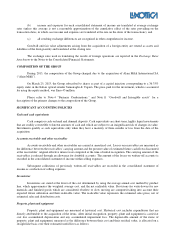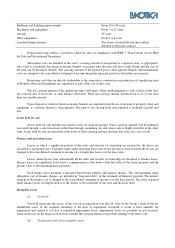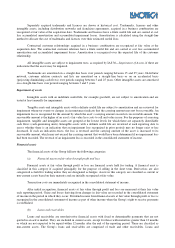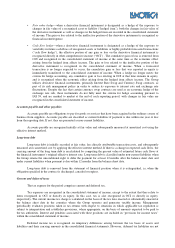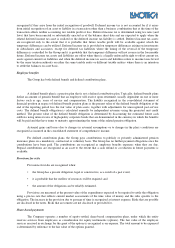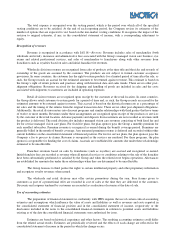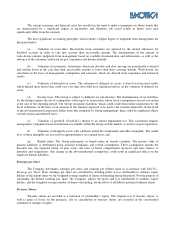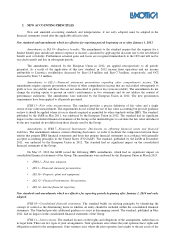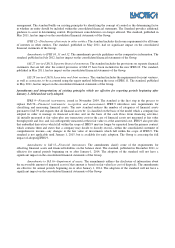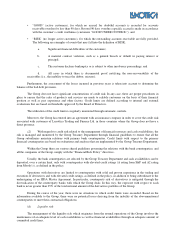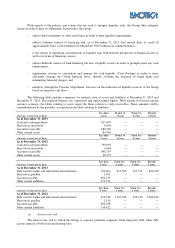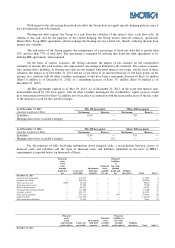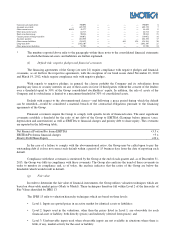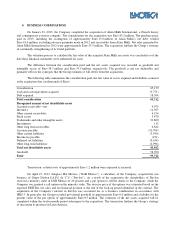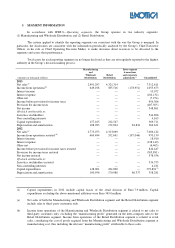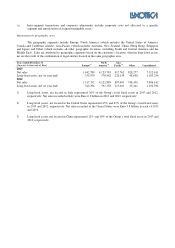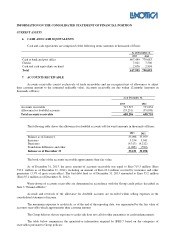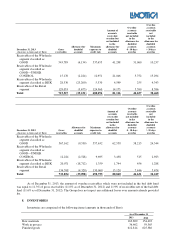LensCrafters 2013 Annual Report Download - page 112
Download and view the complete annual report
Please find page 112 of the 2013 LensCrafters annual report below. You can navigate through the pages in the report by either clicking on the pages listed below, or by using the keyword search tool below to find specific information within the annual report.
3. FINANCIAL RISKS
The assets of the Group are exposed to different types of financial risk: market risk (which includes exchange
rate risks, interest rate risk relative to fair value variability and cash flow uncertainty), credit risk and liquidity risk. The
risk management strategy of the Group aims to stabilize the results of the Group by minimizing the potential effects due
to volatility in financial markets. The Group uses derivative financial instruments, principally interest rate and currency
swap agreements, as part of its risk management strategy.
Financial risk management is centralized within the Treasury department which identifies, evaluates and
implements financial risk hedging activities, in compliance with the Financial Risk Management Policy guidelines
approved by the Board of Directors, and in accordance with the Group operational units. The Policy defines the
guidelines for any kind of risk, such as the exchange rate risk, the interest rate risk, credit risk and the utilization of
derivative and non-derivative instruments. The Policy also specifies the management activities, the permitted
instruments, the limits and proxies for responsibilities.
(a) Exchange rate risk
The Group operates at the international level and is therefore exposed to exchange rate risk related to the
various currencies with which the Group operates. The Group only manages transaction risk. The transaction exchange
rate risk derives from commercial and financial transactions in currencies other than the functional currency of the
Group, i.e., the Euro.
The primary exchange rate to which the Group is exposed is the Euro/USD exchange rate.
The exchange rate risk management policy defined by the Group’s management states that transaction
exchange rate risk must be hedged for a percentage between 50% and 100% by trading forward currency contracts or
permitted option structures with third parties.
This exchange rate risk management policy is applied to all subsidiaries, including companies which have been
recently acquired.
If the Euro/USD exchange rate increases by 10% as compared to the actual 2013 and 2012 average exchange
rates and all other variables remain constant, the impact on net income and equity would have been a decrease of
Euro 72.8 million and Euro 56.7 million, in 2013 and 2012, respectively. If the Euro/USD exchange rate decreases by
10% as compared to the actual 2013 and 2012 average exchange rates and all other variables remain constant, the
impact on net income and equity would have been an increase of Euro 89.0 million and Euro 69.3 million in 2013 and
2012, respectively. Even if exchange rate derivative contracts are stipulated to hedge future commercial transactions as
well as assets and liabilities previously recorded in the financial statements in foreign currency, these contracts, for
accounting purposes, may not be accounted for as hedging instruments.
(b) Price risk
The Group is generally exposed to price risk associated with investments in bond securities which are
classified as assets at fair value through profit and loss. As of December 31, 2013 and 2012, the Group investment
portfolio was fully divested. As a result, there was no exposure to price risk on such dates.
(c) Credit risk
Credit risk exists in relation to accounts receivable, cash, financial instruments and deposits in banks and other
financial institutions.
c1) The credit risk related to commercial counterparties is locally managed and monitored by a group credit
control department for all entities included in the Wholesale distribution segment. Credit risk which originates within
the retail segment is locally managed by the companies included in the retail segment.
Losses on receivables are recorded in the financial statements if there are indicators that a specific risk exists
or as soon as risks of potential insolvency arise, by determining an adequate accrual for doubtful accounts.
The allowance for doubtful accounts used for the Wholesale segment and in accordance with the credit policy
of the Group is determined by assigning a rating to customers according to the following categories:


